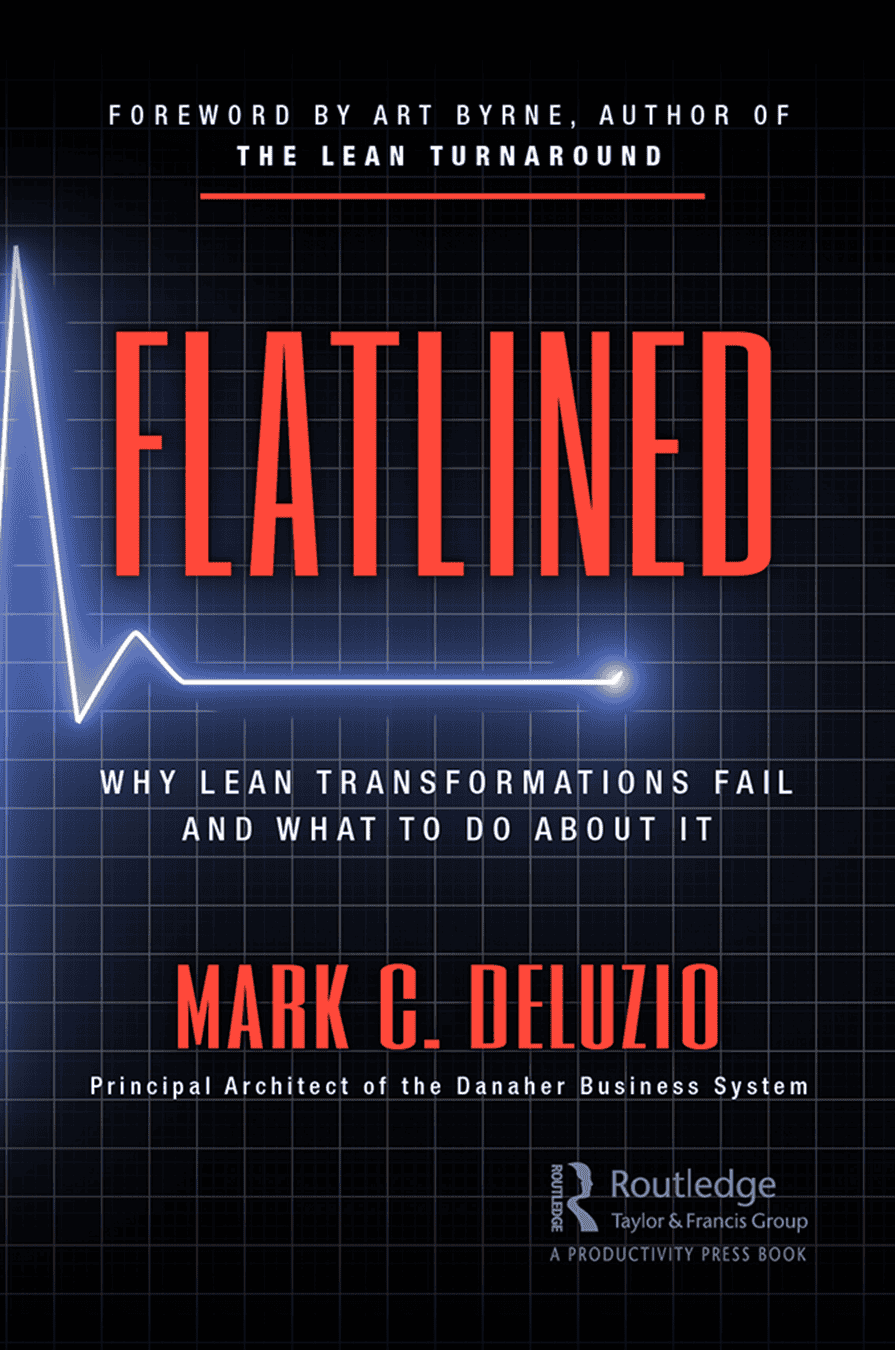Introduction
Back in the 1980’s, Motorola pioneered the idea of Six Sigma, later institutionalized by Jack Welch at General Electric. What does Six Sigma actually mean? Statistically, it represents 3.4 defects per million occurrences. The Six Sigma methodology is a set of statistical problem-solving tools designed to primarily improve the quality of a product, process or service. It follows the DMAIC approach (Define, Measure, Analyze, Improve, Control). On the surface, it appears to be a reasonable approach. Who does not want to reduce variation and improve quality? However, a majority of companies that have relied on the Six Sigma approach have failed to increase shareholder value. An article from Fortune Magazine stated that “of 58 large companies that have announced Six Sigma programs, 91 percent have trailed the S&P 500 since.”
Jack Welch and General Electric has long been lauded as a cutting-edge visionary, well-managed and has been benchmarked for management best practices. When Welch mandated Six Sigma as THE improvement vehicle for GE, he closed off other ideas for continuous improvement. My high-level contacts at GE secretly implemented Lean manufacturing methodologies, hiding their efforts from senior leadership with the fear that if they were found out, they would be viewed as treasonous. A massive consulting industry was formed teaching their clients that the silver bullet to success lies within the Six Sigma methodology. Thousands of companies got on the Six Sigma band wagon and spent virtually millions of dollars on consulting fees, many times paying for consultants that were inadequately trained themselves on the Six Sigma process. Six Sigma was viewed as the replacement for Lean methodologies and companies tried to solve all of their problems with Six Sigma. The old adage applies: When the only tool you have in your tool box is a hammer, all problems look like nails.
Eventually, there was mass confusion over the difference between Lean and Six Sigma. How did this happen? The consulting firm, Time Based Management (TBM) purchased the rights from Maytag Corporation to use the term “LeanSigma.” Had the people at TBM been truly devoted to the teachings of Taiichi Ohno, this never would have happened. In my opinion, the overriding goal to sell consulting services trumped the need to keep Ohno’s message pure. Ironically, TBM forged a meaningful business relationship with Yoshiki Iwata, the Founder of Shingijutsu Co. Ltd. Iwata was one of the 1st Lieutenants of Ohno, so this deviation by TBM was puzzling. Introducing LeanSigma into the market place created mass confusion and did a disservice to the Lean movement, in my opinion.
Six Sigma has its place on the continuous improvement spectrum. Like all tools, they are designed to perform a specific task with a specific purpose. Trying to use a screwdriver to hammer in a nail will lead to failure and perhaps some bruised knuckles. Knowing when to use a specific tool for a specific problem is a skill that takes experience and patience. We will explore the issues with the Six Sigma approach in the following section.
The Problems with Six Sigma
1. The Goal of 3.4 Defects per Million:
In the Six Sigma world, 3.4 defects per million is considered World-Class. One of my Japanese sensei’s stated to me “Six Sigma is no good…3.4 defects is no good. The Toyota Production System strives for ZERO defects!” I was with a Japanese engineer at Hino Motor’s connecting rod cell in Hino City, Japan. I foolishly asked him where he stored his defects and scrap. He stated “DeLuzio-san, we do not make defects in this cell!” Every machine in this particular cell had Poka Yoke and Jidoka devices engineered. Quality was built into the process. It was nearly impossible to make a defect in this cell. Poka Yoke devices are what is commonly known as mistake-proof devices. They prevent you from making an error. Jidoka devices automatically detect a defect and does not allow the process to continue until the problem is corrected. The mindset with Lean is the total elimination of waste, of which defects are one of the predominant wastes. According to reference.com, there are on average 93,000 airline flights per day worldwide. If the airlines subscribed to the Six Sigma standard of 3.4 defects per million, there would be roughly 115 airline crashes per year, or one every three days.
Many have argued that it would be cost prohibitive to achieve zero defects. However, studies have shown that the Cost of Poor Quality (COPQ) ranges anywhere from 15-25% of a firm’s revenues. The cost of rework, delays, scrapped product, warranty, liability etc. make it difficult to argue that zero defects should not be the goal. Lean promotes the total elimination of defects, not just some!!
2. Total Employee Involvement:
When asked how an implementer of Six Sigma engaged his workforce in the improvement process, he responded by saying that employees were instructed to fill out a check sheet to record quality measurements. Nowhere were employees asked to contribute their ideas as to how to improve the quality of the product or process. In order to engage in the Six Sigma process, there is an extensive amount of training that is required (more later). A company cannot afford to put all employees through this training, so many are left with menial tasks usually relegated to data collection and checking off check sheets.
Lean, on the other hand, allows employees to engage immediately in the continuous improvement (kaizen) process. Employees contribute their ideas and play a large role in improvement recommendations as well as the implementation of their ideas. Employees who are engaged in the actual execution of the work are usually your best consultants. They know the work intimately, and in many companies, they have never been asked to contribute their ideas. Case in point: A UK firm who produced temperature controllers was having false readings on their test stands. Product that was proven to be good product were recorded as failures by the test equipment. I facilitated a CEDAC problem solving exercise to try to determine the root cause of the problem. (The Lean tool CEDAC stands for Cause and Effect Diagram with the Addition of Cards.) While we were exploring potential causes, an employee offered that the problem only happens on weekdays, not weekends. This one piece of data led us to find that the factory adjacent to the plant never worked weekends, only week days. Upon further investigation, we found that the adjacent factory emitted Electronic Magnetic Interference (EMI) from its manufacturing process, and that the EMI was interfering with the test stands. The solution was to shroud the test stands with insulating material so that their readings were not affected by the EMI. This problem never would have been detected by a Six Sigma engineer without the input of the employee closest to the work.
3. Training Requirements:
Let’s face it, there is a lot to learn in both the Lean and Six Sigma methodologies. However, the training requirements for Six Sigma is far more technical than Lean and as a result excludes many without a good statistical background. This leads to the establishment of the “haves” and the “have nots.” I have seen Six Sigma clicks formed that excludes the average employee from participating in the improvement process.
Six Sigma certification consists of weeks of training to achieve a certification as a Master Black Belt, a Black Belt, a Green Belt, etc. Belt certification is very expensive and improvements cannot be commenced until the proper certification is achieved. On the other hand, improvements can start immediately with Lean and all can be involved.
4. Many Times the Wrong Tool:
There is an old adage: when the only tool you have in your toolbox is a hammer, all of your problems look like nails. This is a prevalent problem in the six Sigma community. Lean offers a more eclectic approach, offering a wide range of tools to address various situations. I have seen the six Sigma tool been misused on number of occasions and applied to inappropriate situations. When we worked on our benchmark kaizen at GE’s Money division, we applied Lean to their process and reduced the lead time from 63 days to one day. The process time to accomplish the amount of work necessary to complete one order was just one hour. The six Sigma engineers we’re trying to reduce the one hour without any consideration for the 63-day lead-time inherent in the process. This was a misuse of the tool and quite frankly the wrong tool for the task at hand. We used traditional value stream mapping and other lean approaches to reduce the lead-time which resulted in $216 million of additional revenue in the first year alone. This breakthrough was noticed my Senior GE leadership including CEO Jeff Immelt. This gave rise to the popularity of Lean methodologies within General Electric.
5. Kaizen vs. Six Sigma
Most Six Sigma projects span several months. There is an inordinate amount of data collection and an analysis required to complete a six Sigma project. Additionally, there is no sense of urgency which is prevalent in the rapid continuous improvement world of Lean. The typical Lean kaizen achieves rapid results in a very short period of time usually in a matter of days. There is a saying in Lean: “don’t let perfect get in the way of better.” Instead of trying to address every single nuance, lean looks for a 70 to 75% solution. This is the spirit of the kaizen process. The six Sigma process tends to look at comprehensive solutions to address all situations which lengthens the lead-time of the improvement process.
6. Elimination of Wasteful Processes vs. Improving Wasteful Processes
Lean asks the question “what are we doing today that is wasteful?” The concept is to eliminate wasteful processes and activities. Many times, management institutionalizes wasteful processes and consider them as normal. Using the lean lens, these practices would be considered as abnormal. For example, a deburring operation in manufacturing is typically institutionalized in the manufacturing process. Lean looks at any rework process as abnormal and wasteful. It is typical that a six Sigma approach will attempt to improve a process that should in fact be eliminated altogether. So, one must ask the question: “Am I doing things right or am I doing the right things?”
Summary
Six Sigma is a powerful tool. Because of my criticism of the use of this tool, I have been accused of being “anti-Six Sigma,” and not understanding the sophistication of this approach. What many do not realize is that I am in fact certified in Six Sigma, however, because of my notoriety, I do not advertise this due to the fear that many will assume I endorse this approach as THE approach to Continuous Improvement. You cannot build or transform a culture around a tool. You must transform your company by adopting a set of values and principles which you hold yourself accountable. Tools are important, however, they only support you and your adhereance to your values and principles.

